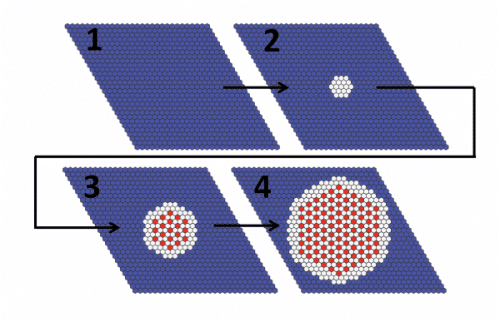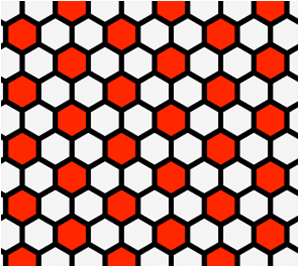I met with Pau Formosa-Jordan (Pau Formosa Jordan) to ask him what they do there at the university.

I met with Pau Formosa-Jordan (Pau Formosa Jordan) to ask him what they do there at the university.
Pau is a Spanish-Catalan born in Barcelona who came to Israel for a four-month internship towards the completion of his doctoral thesis in biophysics in the group of Prof. Marta Ibañes Miguez. The interview was conducted in English and I translated as best I could. In Barcelona Pau is a theoretician who usually works with pencil, paper and computer. He came to Israel to experiment with Dr. David Sheprincek's group at the Faculty of Life Sciences at Tel Aviv University, which combines both theory and experiments.
Pau is also an amateur dancer and particularly fond of modern dance and Lindy Hop. In his free time in Israel he found a vibrant community of dancers of both types.
Pow, so what are you doing there?
In general, we are interested in studying biological systems, such as plant and animal tissues, with the help of tools taken from the field of physics and mathematics. Proteins, which are the building blocks of the cell, are of great interest to us. For example, we study their dynamics inside the cell with the help of physical models. This approach can provide quantitative and accurate information and predictions that are difficult to obtain from standard biological work.
One of the phenomena we study is the spatial arrangement of cells in a tissue. At the beginning of the development process of a tissue, all cells are the same, but later they differentiate into different cell types. For example, there are tissues in which some cells will differentiate into nerve cells and some will not. If we examine the distribution of nerve cells in the tissue, we will find that they are uniformly distributed and in an orderly structure, when nerve cells do not touch each other (see figure).
The two key questions are: how are the cells chosen to become nerve cells, and how is the spatial arrangement maintained during the development process of the tissue.

Are the answers to these questions known?
Partially yes, and they are also related to the same mechanism.
The spatial arrangement from the second question hints to us that a certain type of information must pass between the cells. A cell that decides to become a nerve cell needs to communicate and coordinate with its environment in order for it to be the only one. And this is actually the topic we are investigating: how the communication between the cells causes the formation of the spatial arrangement in the tissue.
How do cells actually 'talk' to each other?
The language is biochemical, a language of interactions between proteins. In the case we are investigating, a protein found on the wall of one cell connects to a protein of another type that exactly matches it, and is found on the wall of a neighboring cell. The interaction between the two proteins produces a chain of chemical reactions at the end of which the rate of production of any proteins in the cell will increase or decrease in response.
So how can such a 'conversation' produce a spatial arrangement of cells in the tissue?
In the intercellular communication system we are studying, for example, a cell that is about to become a nerve cell produces a protein called 'Delta'. The protein reaches the cell wall and binds to another protein on the wall of the neighboring cell called 'Notch'. The interaction between them produces a biochemical signal in the neighboring cell that causes a decrease in the activity of the gene responsible for the creation of the 'Delta' protein. Since the condition for differentiation into a nerve cell is a high concentration of 'Delta', then it is guaranteed that the neighboring cell will not also become a nerve cell. That is, there is a competition between the cells, and the cell that wins the strongest 'transmits' to all its neighbors that it becomes a nerve cell. This will prevent them from differentiating in a similar way, and this process is called in the professional language 'lateral inhibition'.
Where does the approach of biophysics come in here?
I will try to explain through an analogy. Imagine a forest where there are two populations living at the same time: rabbits and wolves. Wolves breed at a certain rate that depends on their breeding habits, but also on the amount of rabbits they eat. The rabbits reproduce at a faster rate, but their number also depends on the number of hungry wolves. We are interested in describing the number of rabbits and wolves over time.
We can write a set of equations, one of which will describe the rate of change in the number of wolves depending on the other parameters (including the number of rabbits). The second will describe the rate of change in the number of rabbits (including dependence on the number of wolves). Now we can solve the set of equations, called rate equations, and get a description of the dynamics of the wolves-rabbits system, given the parameters of the problem.
In a similar way, the story of the proteins 'Notch' and 'Delta' can be translated into a set of equations and the dynamic properties of this process can be studied quantitatively. From this model predictions can be made and tested experimentally.
Tell me about a project you've worked on recently
The developing retina in the embryo of vertebrates is one of the systems where the 'lateral inhibition' process takes place during the differentiation into nerve cells. There is information from previous studies about this process, but it is still not clear how exactly it happens. At the beginning of the process, all the cells that make up the retina are identical. At a certain point, a special protein arrives from the retina (in professional parlance: a morphogen) that causes a group of cells in the center to begin the 'lateral inhibition' process between them. Some of them will differentiate into nerve cells and as a result they will secrete more morphogen. This action will cause more cells, more distant from the center, to start the 'lateral inhibition' process and so on. In this way, the process of differentiation of the retinal cells is done in increasing circles around the starting point (see figure).
We wanted to investigate the role of the 'Delta' protein in the process, especially in areas where the 'lateral inhibition' process has not yet reached, and what happens if it is not produced in sufficient quantity. The research focused on the retina of chick embryos but can be extended to other organisms. It is very difficult to produce in a controlled manner a retina in which there is no 'Delta' in the areas suitable for the experiment. What we chose to do instead is to produce an approximate and simplified mathematical model that would simulate the system by using a minimal number of elements. In this model it would be easy to 'delete' the 'Delta' from certain areas. We solved the model, for different parameters, with the help of computer programming. The first step was to check that the results obtained in the experiment with real tissue can be reproduced with the help of the software. The second step was to run the software without the 'Delta' in the non-differentiated areas.
What did you discover about the role of 'Delta' in the system?
We discovered three main things that go wrong in retinal development without 'Delta' in non-differentiating areas. The first is that under certain conditions too many nerve cells may be formed. The second is that the zone of differentiation no longer grows circularly, that is, at an equal speed in all directions. And the third is that the expansion of the differentiation zone occurs faster than the normal state. Any of these three problems will lead to catastrophe in the development of a real embryo. Therefore, the understanding of this role of the 'Delta' protein may be useful for those who study the development of nerve cells and related diseases, and it will be interesting to test the theoretical results in an experiment.
————————————————————
for further reading:
The technical article About Pau's work on the development of the retina (requires permission):
Pau Formosa-Jordan, Marta Ibañes, Saúl Ares, and José María Frade. 'Regulation of neuronal differentiation at the neurogenic wavefront'. Development, 139, 2321-2329 (2012) doi:10.1242/dev.076406
Program 8 of the recommended podcast 'The Beehive' on a relevant topic (and not coincidentally...):Can a biologist fix a radio?'.
—————————————————————
I would be happy to meet and talk with any research student (maybe you?) who is willing to participate and tell me a little about what he is doing (and all for the price of a not too long conversation). You can contact me via Contact Us Form.
It's time to tell everyone what you're doing, maybe this time they'll understand too 🙂
